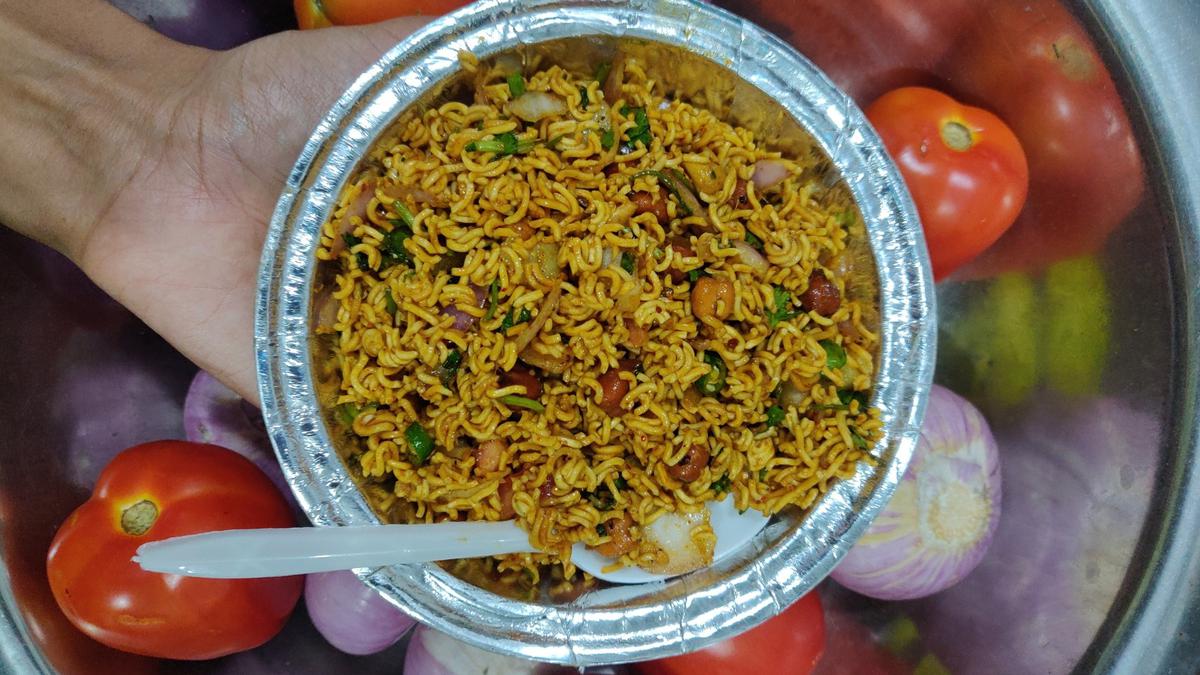
Slurp and snack: Unravelling Nepal’s instant noodle obsession
The Hindu
Nepal's instant noodle culture is a mix of convenience, affordability, and versatility. From trekkers to street vendors, it's a go-to snack for many.Nepal's instant noodle culture is a mix of convenience, affordability, and versatility. Trekkers, office workers, students, and street vendors rely on it for a quick, affordable meal. From raw to cooked, it's a go-to snack for many. Its versatility has influenced menus across the country, with flavours like bamboo, chicken pizza, and Schezwan. With its low price and long shelf life, it's a convenient option for all.
I’ve trekked across remote regions of Nepal, like Langtang National Park in the country’s north-central region, and at 3,400 metres above sea level, I relied on a soupy bowl of instant noodles to keep me warm. From malls to the smallest shack in remote regions, it is hard to find a place that does not sell them. And their versatility has influenced menus across the country.
Living in Biratnagar, on Nepal’s eastern plains, my go-to comfort food is chauchau, as it is known in the local dialect. Raised in Nepal, my first memory of instant noodles is hazy, like the steam from the noodle bowl. But I remember carrying packets of it during school days and sharing it over breaks with friends.
Many a time, my dinner is a variation of chauchau: jhol, sadhekho, fried or chatpatay. Jhol refers to a soup with or without vegetables. Sandheko is a mixture of raw noodles with peanuts or soya beans and vegetables. Chatpatay is a zesty snack mixture of vegetables, puffed rice or crushed gol guppas, tamarind, and lemon juice.
In Nepal, the ease of preparing instant noodles, the tempting taste and the low price (between Nepalese rupee 10 and 50) makes it an affordable meal option for daily wage workers, office employees, trekkers and students. This has resulted in a chauchau-eating culture, which includes people snacking on the raw noodles right from the packet.
According to Japan-based World Instant Noodles Association, in 2022, the demand for instant noodles reached 1,650 million servings in Nepal.
“It is an easy snack. Mix it with the seasonings or have it raw; like any other fast-food snack like chips,” says Vedant Jaju, proprietor of an FMGC company — Asian Thai Foods, Nepal, which manufactures noodles like 2PM, Preeti and Rum Pum. While Rum Pum noodles launched in Nepal in 2001, other players — Rara and Wai Wai have existed in the market since the 1980s. Instant noodles generate the highest revenue under Asian Thai Foods explains Vedant.
“There are two types of noodles — white and brown,” Vedant elaborates. “Brown noodles have a soup coat over them, and white is without. You have to cook white noodles whereas brown noodles can be eaten raw.”











